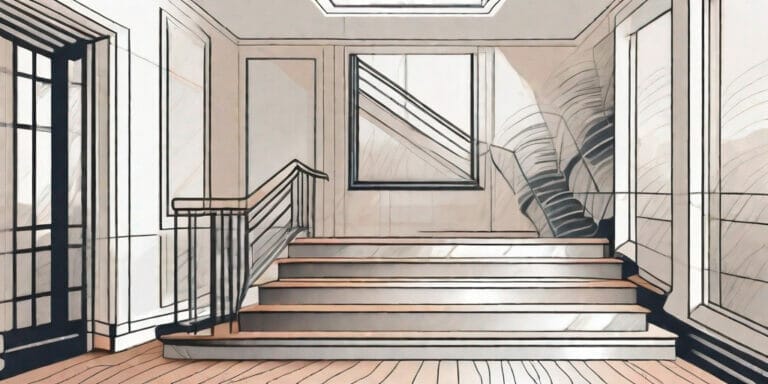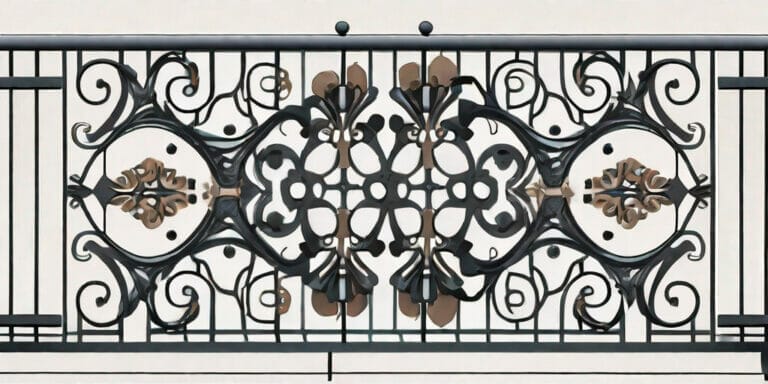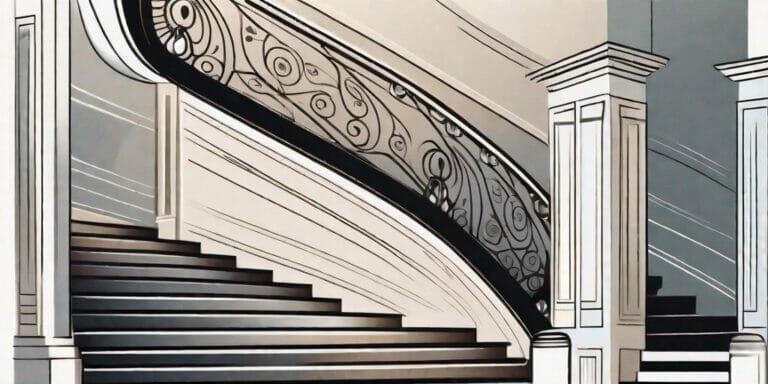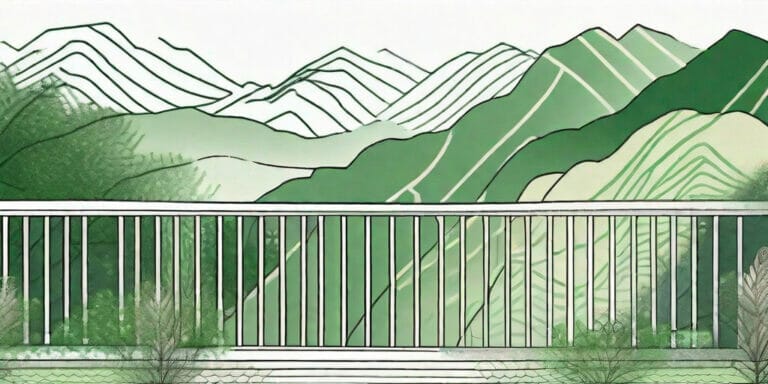Are you considering installing or maintaining banisters in your home? Banisters not only provide safety and support, but they also add a touch of elegance and style to your staircase. In this comprehensive guide, we will walk you through everything you need to know about banisters – from understanding their purpose and different types, to the pre-installation considerations and step-by-step installation process. We will also provide you with post-installation tips and maintenance suggestions to ensure your banisters remain sturdy and visually appealing for years to come.
Understanding Banisters
Before diving into the installation and maintenance process, it’s important to have a solid understanding of what banisters are and their significance. Banisters, also known as stair railings or handrails, are supportive structures that run alongside the staircase to provide stability and safety while ascending or descending the stairs. They act as a physical barrier to prevent accidental falls and offer additional support for individuals with mobility issues.
But banisters are not just functional; they also play a significant role in the overall aesthetics of your staircase and home. With their various designs and materials, banisters can add a touch of elegance, charm, or modernity to your interior space. They are not merely utilitarian elements but also decorative features that can enhance the visual appeal of your home.
What are Banisters?
Banisters consist of several key components, including the handrail, balusters, and newel posts. The handrail, as the name suggests, is the part of the banister that you hold onto while using the stairs. It is typically made of wood, metal, or a combination of both. The choice of material for the handrail depends on personal preference, durability, and the desired aesthetic effect.
Balusters, also known as spindles or pickets, are the vertical posts that support the handrail. They come in various shapes, sizes, and designs, allowing you to customize the appearance of your banister. Balusters can be simple and straight, or they can feature intricate patterns and carvings, depending on the style you want to achieve.
Newel posts are the larger, more decorative posts found at the bottom and top of the staircase. They serve as anchor points for the handrail and balusters, providing structural stability to the entire banister system. Newel posts often feature elaborate designs and can act as eye-catching focal points in your stairway.
Different Types of Banisters
When it comes to banisters, there are numerous options to choose from based on your personal style and the décor of your home. Some common types include traditional wooden banisters, sleek metal designs, ornate ironwork, and modern glass options.
Traditional wooden banisters exude warmth and classic charm. They are available in various wood species, such as oak, maple, mahogany, and walnut, each with its own unique grain pattern and color. Wooden banisters can be stained or painted to match your interior design scheme, making them versatile choices for any home style.
Sleek metal banisters offer a contemporary and minimalist look. They are often made from stainless steel, wrought iron, or aluminum, providing a sleek and durable option. Metal banisters can be left in their natural metallic finish or coated with different colors or finishes, such as matte black or brushed nickel, to create a modern and stylish appearance.
For those who appreciate intricate designs and a touch of grandeur, ornate ironwork banisters are an excellent choice. These banisters feature elaborate scrollwork, twists, and decorative motifs that add a sense of elegance and sophistication to your staircase. Ornate ironwork banisters are often custom-made, allowing you to create a truly unique and eye-catching feature in your home.
If you prefer a more contemporary and open feel, modern glass banisters may be the perfect option. Glass banisters provide a seamless and transparent look, allowing light to pass through and creating a sense of spaciousness. They can be combined with metal or wooden handrails and balusters for a stunning visual contrast, resulting in a sleek and modern staircase design.
With the wide variety of banister options available, you can choose the type that best suits your personal style, complements your home’s interior design, and meets your safety requirements. Whether you prefer a traditional, modern, or ornate look, banisters offer endless possibilities to enhance the beauty and functionality of your staircase.
Pre-Installation Considerations
Before you begin the installation process, there are a few key factors to consider to ensure a successful and smooth project.
Installing new banisters can not only enhance the aesthetic appeal of your home but also improve safety. The banister serves as a protective barrier, preventing accidental falls and providing support while navigating stairs. Therefore, it is crucial to approach the installation process with careful consideration and attention to detail.
Choosing the Right Banister for Your Space
The first step in installing new banisters is selecting the right style and material to suit your space. This decision should take into account the overall design of your home, your personal preferences, and any specific safety requirements.
Consider the architectural style of your home. Is it modern, traditional, or somewhere in between? Choosing a banister that complements the existing design elements will create a cohesive look throughout your space.
Additionally, think about the functionality of the banister. If you have young children or pets, for example, you may want to choose a banister with narrower balusters to prevent them from getting stuck or accidentally slipping through. Safety should always be a top priority.
Furthermore, consider the material of the banister. Wood, wrought iron, and stainless steel are popular options, each offering a unique aesthetic and level of durability. Take into account factors such as maintenance requirements and longevity when making your decision.
Tools and Materials Needed for Installation
Once you’ve chosen your banister style, gather all the necessary tools and materials before starting the installation. Having everything prepared in advance will save you time and ensure a smoother process.
Common tools needed for banister installation include a tape measure, level, drill, screws, and a saw. These tools will help you accurately measure, align, and secure the banister components.
In addition to tools, the specific materials required will depend on the chosen banister type. Generally, you will need the following components: a handrail, balusters, newel posts, brackets, and installation hardware. These elements work together to create a sturdy and visually appealing banister system.
When selecting the materials, consider their quality and compatibility with your chosen banister style. Ensure that the handrail is smooth and comfortable to grip, the balusters are strong and properly spaced, and the newel posts are secure and visually appealing.
By carefully considering the pre-installation factors and gathering the necessary tools and materials, you are setting the foundation for a successful banister installation. Taking the time to plan and prepare will result in a beautiful and functional addition to your home.
Step-by-Step Banister Installation
Now that you’ve completed the necessary preparations, it’s time to dive into the step-by-step installation process. Remember to take your time and follow each instruction carefully to ensure a secure and aesthetically pleasing result.
Preparing the Area for Installation
Begin by clearing the area around your stairs and protecting the floor to prevent any damage during the installation process. Measure and mark the desired height for your handrail, ensuring it adheres to local building codes and regulations.
Installing the Newel Post
The newel post is the first component to be installed and acts as the anchor for the entire banister system. Depending on your staircase design, you may need to remove the existing post or start from scratch. Secure the newel post at the bottom of the stairs using the appropriate brackets and screws, ensuring it is plumb and level.
Attaching the Handrail
With the newel post securely in place, carefully attach the handrail along the length of the staircase. Make sure to align it properly and use the appropriate hardware to ensure a tight and sturdy fit.
Securing the Balusters
Once the handrail is in place, it’s time to secure the balusters – the vertical posts that support the handrail. Space them evenly along the length of the banister, ensuring they are properly aligned and attached securely to the handrail and newel post.
Post-Installation Tips
After completing the banister installation, it’s essential to perform a few checks and add the finishing touches to ensure a safe and visually appealing result.
Checking for Stability
Give your newly installed banister a thorough inspection to ensure it is stable and secure. Test the handrail’s resistance and make sure it can support your weight without any movement or wobbling. Additionally, check the balusters’ attachment points to ensure they are firmly in place.
Finishing Touches
Now that your banister is secure, it’s time to add the finishing touches that bring the whole look together. Sand down any rough edges, apply a protective finish to the wood, and touch up any paint or stain as necessary. These small details can significantly enhance the overall appearance of your banister.
Maintaining Your Banisters
While banisters are designed to withstand daily use, it’s important to perform regular maintenance to extend their lifespan and keep them looking their best.
Regular Cleaning Tips
To keep your banisters clean and free of dust and debris, use a soft cloth or sponge with a mild soap solution to gently wipe down the handrail and balusters. Avoid using abrasive cleaners or harsh chemicals that could damage the banister’s finish.
Dealing with Wear and Tear
Over time, banisters may experience wear and tear, especially in high-traffic areas. Regularly inspect your banisters for any signs of damage, such as loose handrails or balusters. Repair or replace any worn-out components to maintain their structural integrity.
When to Consider Replacement
If your banisters are severely damaged, outdated, or simply don’t fit your current style preferences, it may be time to consider a replacement. In such cases, consult with a professional to determine the best course of action and choose a banister that meets your needs and adds value to your home.
Installing and maintaining banisters is a comprehensive process that requires careful planning and attention to detail. By following this guide, you’ll be equipped with the knowledge and steps necessary to successfully install banisters in your home and keep them in top-notch condition for years to come. Whether you’re updating your current banisters or installing new ones, they will not only provide safety and support but also elevate the aesthetic appeal of your staircase. So, get ready to enhance both the functionality and beauty of your home with stylish and durable banisters!






